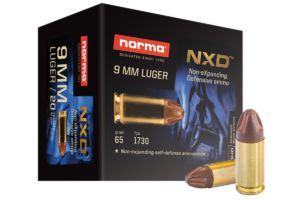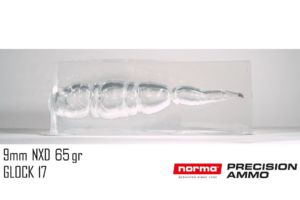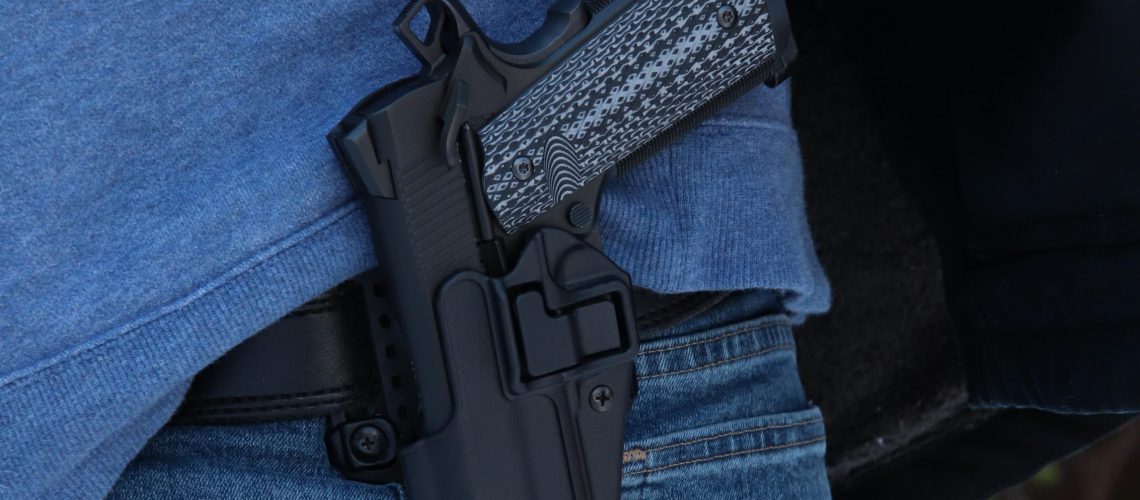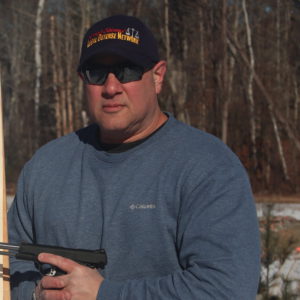New Jersey gun owners have arrived at a time that many (including me) thought would never arrive – the ability to actually apply for and receive a Permit to Carry a Handgun. This positive change happened because of the US Supreme Court ruling in NEW YORK STATE RIFLE & PISTOL ASSOCIATION, INC., ET AL. v. BRUEN, SUPERINTENDENT OF NEW YORK STATE POLICE, (NYSRP v. Bruen).
Yes, the training requirements are more burdensome than most other states; yes, when compared to other states, the $200 fee for a two-year permit is very high, yes, the application process is taking far longer than anyone who supports Second Amendment rights thinks it should. But the most onerous provision is the requirement that gun carriers maintain a $300,000 liability insurance policy. It is true that these requirements are significantly more restrictive than many other states; more so than even Massachusetts and Connecticut which are not considered “pro-gun states”. (At the time this is being written, several of the new laws are subject to a court challenge of which NJ2AS is a part of.)
However, even with the burdensome rules and restrictions and the relatively short permit term (two years), the reality is that law abiding people now have the ability to carry a concealed handgun for personal protection and that is a good thing — more law abiding people, carrying more guns means less crime. Open carry, which was previously legal, is now prohibited due to changes made at Governor Murphy’s behest, after NYSRP v. Bruen.
Like all things related to firearms in New Jersey, there are some pitfalls. The purpose of this article is to warn Garden State residents of those pitfalls and how to avoid them. First, let’s talk about 2C:39-3f which prohibits the possession of “hollow nose” (commonly referred to as hollow point) or “dum-dum” ammunition except for some narrow exemptions found in 2C:39-3 g(2)(a) which allows the possession and use of “dum-dum” or hollow nose ammunition at home, transporting it from the place of purchase to their home or when engagimg in target shooting at an authorized range pursuant to 2C39-6f. In short, none of the exemptions allow a person who has a Permit to Carry a Handgun to load that gun and carry it in public with hollow point ammunition. Legal gun carriers are currently limited to ball ammunition and a few specific cartridges that have polymer tips which the New Jersey State Police (NJSP) have stated are lawful to carry: “Ammunition lacking a hollow cavity at the tip, such as those with a polymer filling, are not considered to be hollow point ammunition.”
See: https://nj.gov/njsp/firearms/firearms-faqs.shtml specifically, Question 13 which lists several types of ammunition which are marketed as defensive cartridges as being approved:

Hornady Critical Defense (designed for shorter barrel concealed carry pistols, but will function just fine in a full size pistol), the patented Flex Tip® aids expansion and eliminates clogging when passing through clothing, and will reliably expand and not exit a criminal attacker;
Hornady Critical Defense Lite: Designed and intended for the smallest of sub-compact pistols. This cartridge has all of the benefits of Critical Defense but with a very fast burning powder to maximize velocity with minimal “muzzle flip”;
Hornady Critical Duty (designed for full size pistols), Hornady® Flex Tip® design eliminates clogging and aids bullet expansion. A large mechanical jacket-to-core InterLock® band works to keep the bullet and core from separating for maximum weight retention, excellent expansion, consistent penetration and terminal performance through solid barriers such as car windshields and doors;
This Hornady Fact Sheet explains the differences between Critical Duty and Critical Defense Ammunition;
Cor-Bon PowRball – designed to aid feeding in semi-automatic pistols and delay expansion in soft tissue;
Glaser Safety Slug, (they make a silver and blue tip to penetrate different types of clothing), and;
Nosler Inc. Defense ammunition is a bonded polymer tip over a hollow point bullet and was designed to promote reliable feeding in semi-automatic pistols. It is not made in revolver chamberings;
While not specifically listed by NJSP, Hornady Critical Defense Lite uses the same type of polymer tipped bullets as Critical Defense and would presumably be lawful to carry in NJ. Critical Defense Lite was designed and intended for use in the smallest of sub-compact pistols. This cartridge has all of the benefits of Critical Defense but with a very fast burning powder to maximize velocity with minimal “muzzle flip”.
I have reviewed all of the above ammunition and Hornady by far offers the most loadings, in the most calibers — including revolver calibers. In designing these cartridges. Hornady clearly thought “outside the box” and used non-traditional bullet weights to obtain the best expansion and penetration for each caliber.
Test the self-defense ammunition you choose to make sure it will function properly in your pistol.
I am a former NJ resident and I owned guns when I lived there. I am quite familiar with the anti-gun biases within state government and I was skeptical that the NJSP interpretation would actually prevent the arrest and prosecution of anyone caught carrying the approved polymer tip ammunition in NJ. In an effort to provide readers with more clarity on the issue, I contacted my old friend, Attorney Edward Zohn for an explanation.
Attorney Zohn told me that it is incorrect to just read the statute and the state police’s approval. We also need to read 2C:2-4 c(2) which says in essence, that if the state police say its legal, even without a clear proclamation by statute, you can carry the listed types of ammunition. A gun carrier may rely on the NJSP’s opinion if they are prosecuted for illegal possession of hollow point or “dum-dum” ammunition. But as my friend Ed has told me many times, while statements like Question 13 from the NJ State Police website may keep you from being convicted, it may not prevent you from arrest if the officer has not read the website or his anti-gun Chief says “arrest them anyway.” It would be wise to keep a printed copy of the NJSP webpage in your car.
For those who wish to exercise an overabundance of caution, Norma manufactures a line of ammunition with what they call an NXD bullet or Non-eXpanding Defense. The bullets are made from injection molded copper and are not a hollow point or polymer tip. They are not designed to expand. NXD bullets are light and fast moving. The NXD bullet is barrier blind and transfers 100% of its energy to the target. NXD is currently available in 9mm and .380 with more calibers expected later this year. The 9mm – 65gr – NORMA NXD – Defensive ammunition claims a muzzle velocity of 1730 FPS and an energy transfer of 432 foot pounds into a criminal attacker which places it ahead of most +P and +P+ ammunition.

In addition to the hollow point and so called “dum-dum” ammunition ban, New Jersey has a blanket ban on the ownership and possession, for private citizens, of what the state calls a “large capacity ammunition magazine” which means: “…a box, drum, tube or other container which is capable of holding more than 10 rounds of ammunition to be fed continuously and directly therefrom into a semi-automatic firearm.” See 2C:39-1y for the definition 2C:39-9h for the ban.

How is a law abiding New Jersey resident able to properly equip themselves for their personal defense and not run afoul of New Jersey’s onerous anti-gun laws? With careful prior planning.
During the 1980s and early 1990s there were hundreds, if not thousands of articles written debating which cartridge was more effective, slow and large (.45 ACP) or fast and small, (9 mm). Many 9mm pistols had a standard capacity of 13, 15 or 17 cartridges, while most .45 ACP pistols held 7 or 8 cartridges. The 1986 FBI Miami shootout that resulted in the deaths of two FBI agents at the hands of violent criminals gave credence to the argument that 9mm was not an effective fight stopper. In 1990, a collaboration between Winchester Ammunition and Smith and Wesson gave birth to the .40 S&W caliber. This allowed a larger diameter bullet to fit in a 9mm size gun and offered increased stopping power compared to the 9mm ammunition available in 1990 with less felt recoil than the 10mm parent cartridge.
To be sure, the ammunition that was commonly available in the 1980s and 1990s was ineffective compared to the bullets that are available in 2023. Bullets such as Speer Gold Dot and Federal HST that have their jackets bonded to their cores, expand reliably and retain most of their weight on impact were not released until years after the Miami shootout. Because of advances in modern bullet designs and a large selection of 9mm pistols that hold 15, 17, 19 and even 21 cartridges, 9mm is rapidly becoming the most popular caliber for law enforcement and armed citizens.
In the twenty-first century, ammunition makers are offering many good, non-hollow point options. However, the statutory prohibition on hollow point ammunition defies common sense. A full metal jacket, or even a lead ball bullet that does not expand creates a very real risk of over penetration. In the real world this means that a bullet fired at criminal attacker, in a justified act of self-defense, can exit the attacker and possibly strike an innocent person. New Jersey lawmakers have set people up for civil liability – choose your carry load wisely.

Unfortunately, not only are New Jersey residents limited to non-hollowpoint ammunition, they are also limited to magazines with a capacity of no more than 10 cartridges.
During the 10 year period between September 13, 1994 and September 13, 2004, when the now infamous Clinton gun and magazine ban was in effect, most gun carriers opted for ten large cartridges — either .40 S&W or .45 ACP. The 1911 experienced a resurgence and gun makers produced hundreds of thousands of small pistols chambered for these cartridges to meet the demands of concealed carriers.

Since New Jersey residents are limited to 10 cartridges, (although there is no prohibition on carrying several spare magazines), if I were still living in New Jersey, I would opt for 10 large cartridges in either a sub-compact Glock 27 (10 – .40 S&W) or Glock 30 (10 – .45 ACP) for the summer and a full size 1911 (8 – .45 ACP) during the fall and winter and I would carry at least two spare magazines. The standard capacity of the pictured Glock 19X is 17 or 19 cartridges, and the standard capacity of the pictured Smith & Wesson M&P 9 is also 17 cartridges; but if you are forced to carry less than standard capacity magazines why not just carry a smaller (Glock 30) or close to the same sized gun (M&P .45), with fewer, but larger cartridges? This just makes more sense for those who are forced to comply with New Jersey’s unconstitutional laws.
I wish my friends who still live in New Jersey the very best of luck! Stay safe, stay vigilant and always carry your self-defense gun!
The above does not constitute legal advice. The author is not an attorney, he is a firearms instructor and firearms technology expert. If readers have any questions about the legality of any of the mentioned products they are urged to consult a New Jersey licensed attorney.

